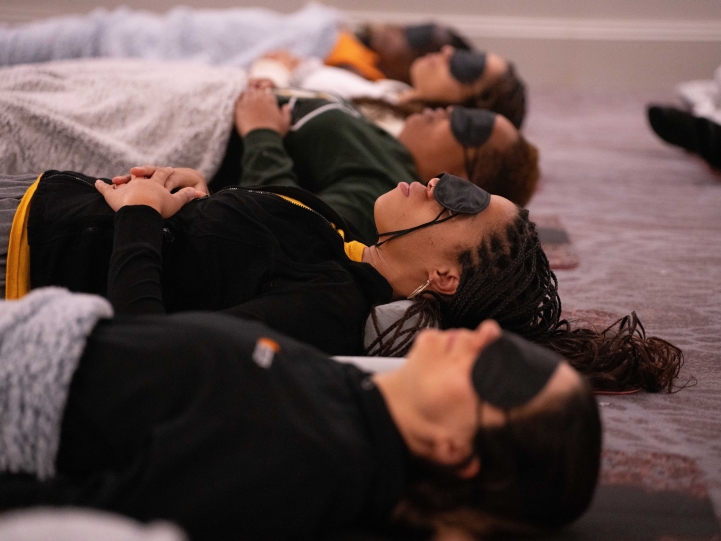
You Can’t Pour from an Empty Cup: Prioritizing Mental Health at HBCUs for Students and Staff
Health, Safety, and Well-being Policy and Advocacy AVP or "Number Two" Faculty Mid-Level New Professional Senior Level VP for Student Affairs
February 19, 2025
I wake up every morning at 4:30 to work out—not because I’m chasing a physical goal, but because doing so is essential for my mental health. In a world where Black women are expected to be everything for everyone all at once, intentionally carving out time to nurture myself has become a revolutionary act. As the Vice President for Research and Policy at NASPA, I’ve seen firsthand how essential it is to prioritize mental health and well-being—not only for students at Historically Black Colleges and Universities (HBCUs), but for the staff and administrators who guide them as well.
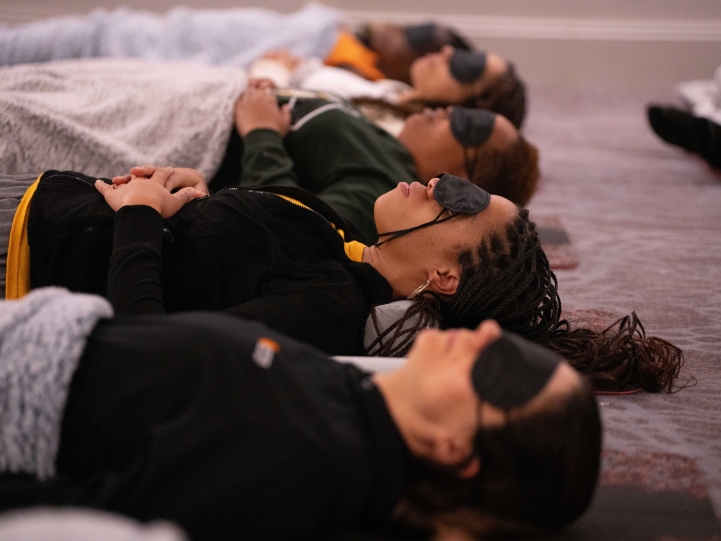
HBCU Convening attendees take time for well-being in an immersive sound bath experience.
At Lumina Foundation's recent HBCU Convening in New Orleans, the focus on mental health and wellness felt deeply personal. Because it is personal. From the moment I walked into the Wellness Room—where attendees could meditate in virtual reality, enjoy complimentary chair and/or table massages—to the immersive sound bath experience provided on day two of the convening, it felt like I’d come home. This wasn’t just a convening; it was a family reunion, a moment to reflect on our shared struggles and triumphs as a community.
Supporting Those Who Serve
HBCUs are often celebrated for their ability to nurture students and create spaces where they feel a sense of belonging—for some, for the first time in their lives. But what about the staff who help make that sense of belonging a reality? Student affairs professionals at HBCUs often wear six hats at once. They’re mentors, advocates, problem-solvers, event planners, and much, much more. While these roles are undoubtedly fulfilling, they can also lead to burnout, especially when we don’t take time and effort to pour back into those who so graciously pour into our students day in and day out.
Lumina’s convening highlighted the importance of wellness for staff, emphasizing that mental health initiatives can’t stop at students with elements of the event like the sound bath and Wellness Room reminding us that tending to our own well-being isn’t selfish, it’s self-care.
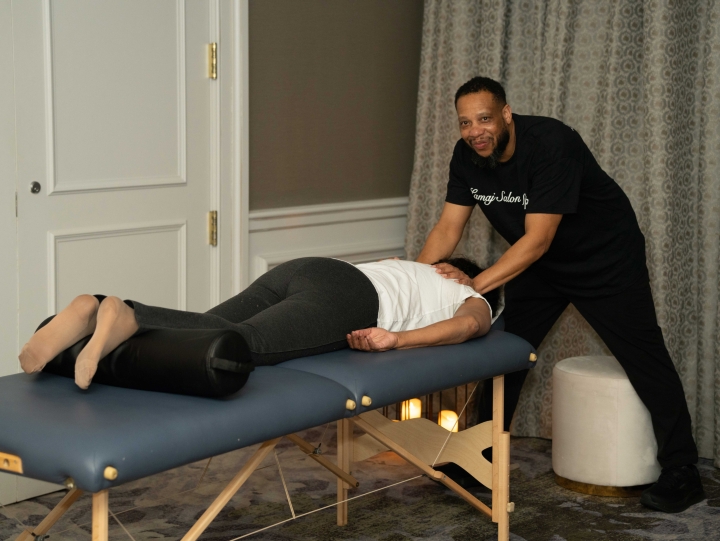
Lumina's HBCU Convening featured a Wellness Room where attendees enjoyed complimentary table and/or chair massages.
We’ve lost too many Black women in senior leadership roles in higher education to other industries and, tragically, death—whether suddenly or by suicide. In 2024, Dr. Antoinette “Bonnie” Candia-Bailey, vice president of student affairs at Lincoln University of Missouri, an HBCU in Jefferson City, died by suicide. This news came on the heels of Claudine Gay’s resignation as the first Black president at Harvard University. And prior to that, there were the back-to-back sudden deaths of Temple University Acting President JoAnne Epps and Volunteer State Community College President Orinthia T. Montague.
According to the Centers for Disease Control, roughly one in four U.S. adults is living with a mental health condition. That’s almost 60 million people. We also know that racism is a public health threat—one that results in higher rates of diabetes, hypertension, obesity, asthma, and heart disease among Black people when compared to our white counterparts. Furthermore, the life expectancy for Black people in the U.S. is four years lower than white people. Therefore, self-care isn’t just a nice-to-have—it can literally be a matter of life or death.
In her 1988 book, A Burst of Light, Black feminist, lesbian, poet, mother, and warrior Audre Lorde famously wrote, “Caring for myself is not self-indulgence, it is self-preservation, and that is an act of political warfare.” When we invest in the mental health of our staff, we’re ensuring they can not only show up fully for their students, but that they can do so for their families, communities and, most importantly, for themselves.
Mental Health as a Strategic Priority
One of the most impactful sessions at the convening was “Healing as We Rise: Harnessing the Power of Community for Mental Health at HBCUs,” led by Dr. Raé Lundy, Director of Counseling Services at Georgia State University. During her TED-style talk, Lundy introduced her brilliant BEAM framework for mental health at HBCUs. Her approach goes beyond crisis response, integrating mental wellness into the very fabric of institutional policies, strategic plans, and campus culture.
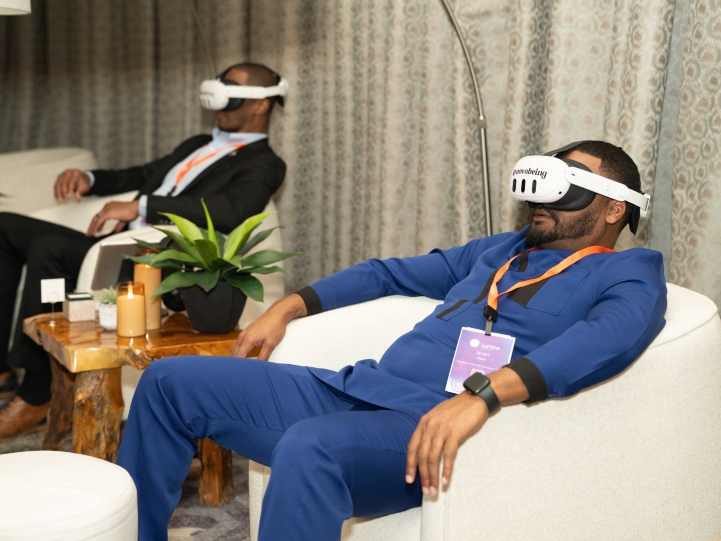
HBCU Convening attendees meditate in virtual reality.
Dr. Lundy’s framework includes:
-
Building mental health into institutional policies and providing leadership development for faculty and staff
-
Engaging in systemic cultural change by incorporating student voices in initiatives and creating peer-led mental health ambassador programs
-
Anchoring programs in preventative support by creating dedicated no- or low-tech calm spaces for students to destress
-
Measuring outcomes for growth and accountability
These initiatives don’t just boost mental health—they improve retention rates among both students and staff, as well as graduation rates. When students feel supported, they stay. When staff—particularly Black women—feel valued, they don’t just survive, they thrive.
A Call to Action
We live at the intersection of racism and sexism, which author, activist, and professor Moya Bailey describes as misogynoir. As a result of these compounding identities and this nation’s history of excluding Black women, we’re more likely to seek out higher education and advanced degrees to get ahead, which oftentimes leads to more student loan debt.
According to a report from the Student Borrower Protection Center, “Black women hold slightly higher debt burdens than Black men and significantly higher debt burdens when compared to white women.” But the inequity doesn’t stop there. Black women also experience substantial wage gaps upon graduating, thus perpetuating the cycle of high debt, a difficult time repaying that debt, and the challenge of building intergenerational wealth.
But nevertheless, we persist, we organize and we galvanize. Collective strength must be applied to our work in education.
It’s time for funders, policymakers, and institutional leaders to double down on mental health initiatives at HBCUs. This means investing in wellness programs not as a luxury, but as a strategic priority. It means funding professional development for staff, offering livable wages, and creating environments where everyone—students and staff alike—can reach their full potential.
The Stakes Are Personal
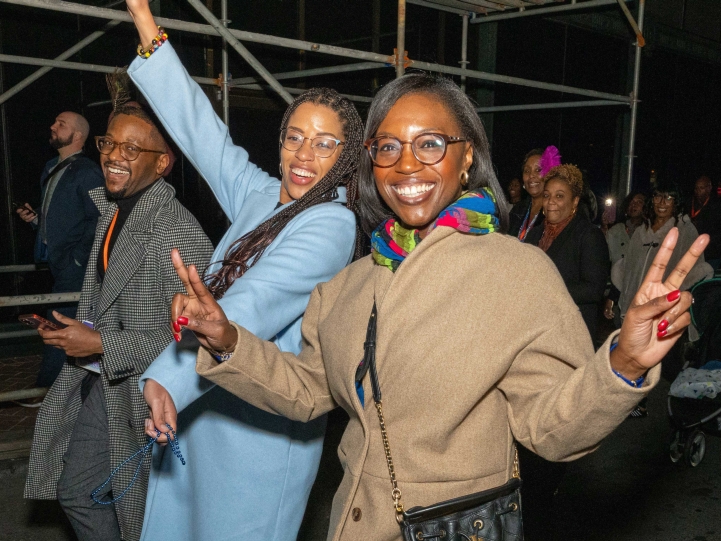
NASPA Vice President for Research and Policy Jhenai Chandler attends Lumina's HBCU Convening in New Orleans.
For me, this work is deeply personal and always has been. As a first-generation college graduate, proud HBCU alum and the mother of a 17-year-old daughter, I understand firsthand the transformative power of higher education. College didn’t just change my life—it changed my family’s trajectory. But the journey isn’t easy. Navigating these spaces as a Black woman often feels like carrying the weight of my ancestors’ hopes while simultaneously building a path for future generations.
At the convening, I reflected on my grandmother, who didn’t matriculate beyond eighth grade, and on my daughter, who is now searching for the right postsecondary education for herself. Their stories remind me why I do what I do and why this work matters. It’s about ensuring that every student, no matter their background, feels seen, valued, and supported—and that the people helping them get there feel just as nurtured.
Moving Forward
If there’s one thing I took from the convening, it’s this: Healing is both individual and collective. It happens in Wellness Rooms and sound baths, in policy meetings and peer-led initiatives. It happens when we prioritize the mental health of everyone in our HBCU communities.
We truly cannot pour from an empty cup. But when we pour into each other—when we create and invest in intentional spaces for rest, reflection, and renewal—our impact is limitless.
Let’s ensure that every HBCU staff member and student has the tools to thrive. Because when we invest in wellness, we’re investing in a brighter future for us all.
Jhenai W. Chandler, Ph.D., is NASPA's vice president for reseach and policy.